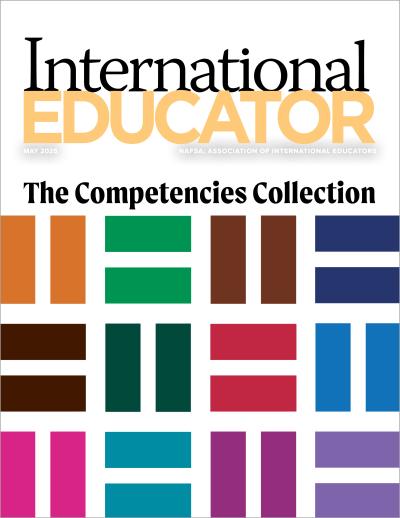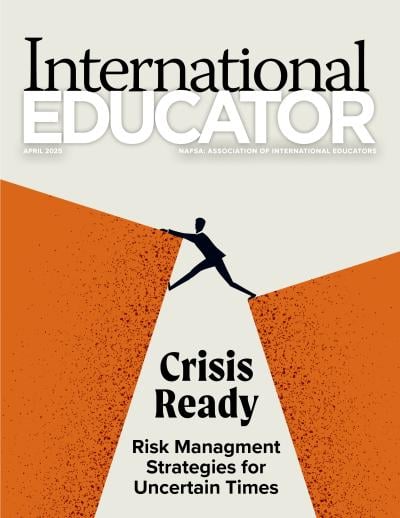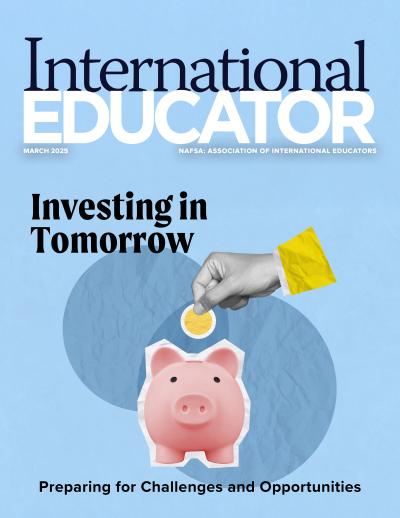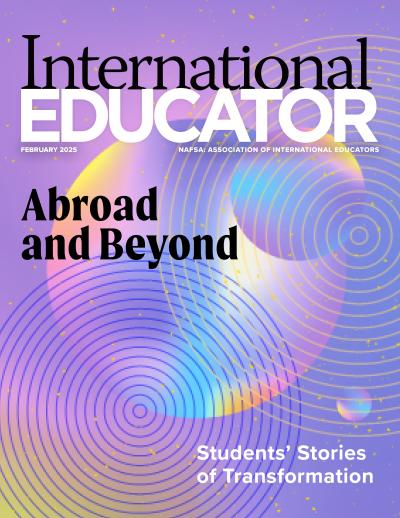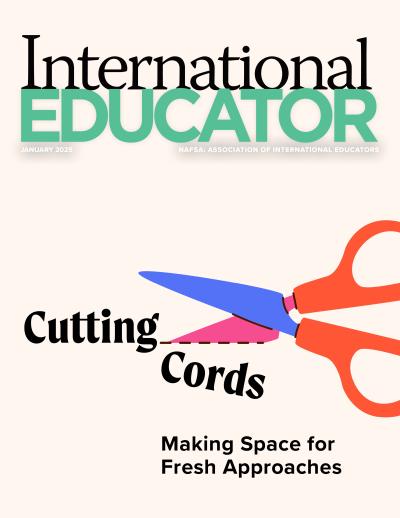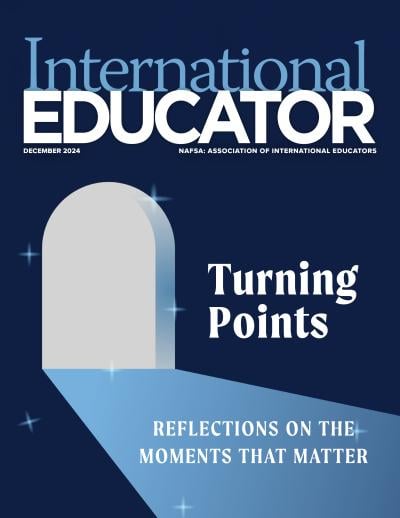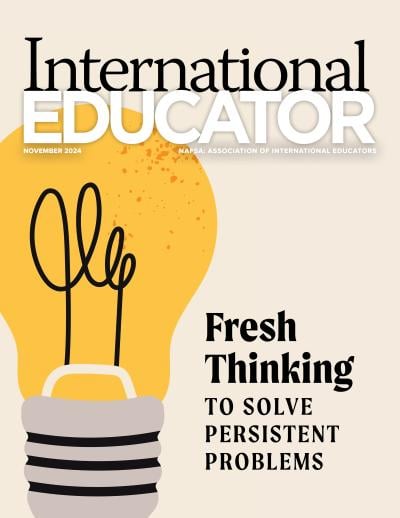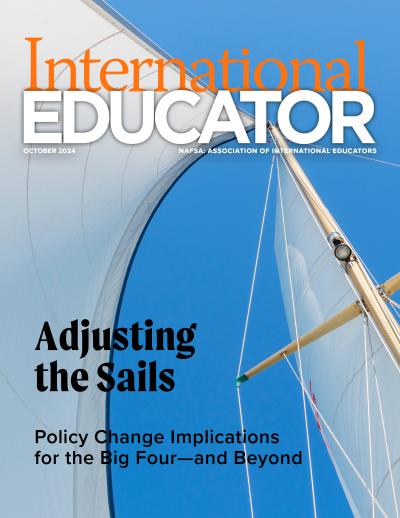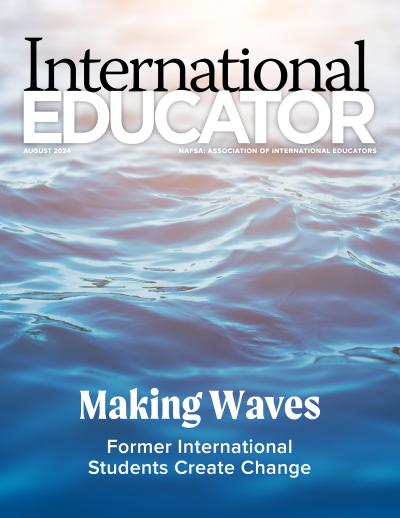Focus on Intentionality: Making the Most of Short-Term Study Abroad Programs

Study abroad programs offer students valuable and transformational cultural experiences, and short-term programs—which usually last from one to eight weeks—are growing in popularity following the COVID-19 pandemic, according to data from the 2024 Open Doors report. However, these programs are often misperceived as lacking the depth and impact of semester- or yearlong experiences.
“There’s this idea out there—especially among people who aren’t familiar with education abroad—that faculty-led [short-term] programs are just glorified vacations with a side of academic credit,” says Ashley Neyer, director of study abroad at Louisiana State University (LSU). “But in our field, we’ve long known that [these] programs can be just as impactful as semester-long ones if they’re designed with intention. The challenge has been that we didn’t have comprehensive data to really prove it—until now.”
In her previous role at the University of Alabama-Birmingham, Neyer was involved in literature review of research published between 2001 and 2020 on faculty-led, short-term programs at U.S.-based institutions. The review reaffirmed what practitioners have long argued: Short-term programs are just as effective as long-term programs in providing meaningful culturally immersive experiences.
“We’ve long known that [these] programs can be just as impactful as semester-long ones if they’re designed with intention. The challenge has been that we didn’t have comprehensive data to really prove it—until now.” —Ashley Neyer
“This data we reviewed is a huge step forward because it shifts the conversation from, 'We think this works,' to, 'Here’s the proof,'” she explains. “It’s something we can use to advocate for these programs—not just with students but also with leadership who may still question their value."
But short-term program effectiveness doesn’t just happen. There must be intention in how programs are designed and implemented in order to create meaningful intercultural learning experiences for participants.
Planning and Development
Faculty preparation and intentional program design are crucial to success, says Kirsten Sheppard, director of global engagement at Maryville College. “Research has shown that programs incorporating key design elements—'moments that matter,' like research projects, interactions with local students, service learning, homestays, or other meaningful connections with locals—are more likely to foster positive growth in global competency,” she explains.
At Maryville College, Sheppard’s team has implemented several strategies to build faculty confidence and competence with short-term study abroad programs, including:
- Developing a Global Fellow Program for faculty, which prepares short-term program leaders by teaching them best practices in experiential learning, education abroad, and global competency development.
- Building intentional design elements into the proposal form for short-term programs. Sheppard’s team asks faculty to identify at least two specific strategies for global competence development and cultural immersion—such as including a service-learning project abroad, meeting with experts in-country, or interacting with student peers abroad. They also require program leaders to set at least one student learning outcome related to global competence development through cultural immersion.
- Encouraging faculty to design programs focused on global issues to help students connect with other parts of the world—such as visiting farms to understand sustainable agriculture.
Similarly at LSU, when developing faculty-led programs, Neyer and her team prioritize experiences that go beyond surface-level interactions, allowing students to engage directly with the local culture and people in meaningful ways.
“We’re now collecting detailed data during the proposal process to focus on reviewing programs for intentionality—ensuring that every component serves a specific purpose,” she says. “We’re also preparing to implement Hunter’s global competence model in these programs, which will be a game changer. [The model] gives us a way to measure how the programs are impacting students’ growth in meaningful, tangible ways. It’s all about creating programs that don’t just check the boxes but genuinely transform the student experience.”
Setting the Stage for Students
Preparing students for cultural differences before they depart is also essential to a meaningful experience on a short-term program, and predeparture activities can set the stage for deeper learning on site. At Barcelona Study Abroad Experience (SAE), Rich Kurtzman and his team use a “cultural blueprint” activity to help students think critically about how they process cultural differences.
“This is a great way for students to start seeing their own culture from an outside perspective.” —Rich Kurtzman
In this activity, students write down what they would recommend a university-age student from Spain do, see, and experience to get to know the people and culture of their hometown. Then, they explain what that student would learn about the culture by following their suggestions. The result is a blueprint of activities that students can use during their study abroad experience to more deeply immerse in the local culture.
“This is a great way for students to start seeing their own culture from an outside perspective and begin to 'iceberg' themselves—observing behaviors above the surface and then diving deeper to understand the values and beliefs behind those behaviors,” says Kurtzman, whose book, Like a Fish in Water: How to Go Abroad When You Go Abroad, offers activities for students to conduct before, during, and after study abroad.
Immersion in Country
Time spent in the host country is crucial for emphasizing opportunities for cultural immersion. Faculty should help students by providing them with opportunities for immersion, encouraging them to be intentional with their time, and embark on purposeful activities to make the most of their short time.
For instance, Kurtzman and his team use an activity called “the One-Hour Ambassador” to kick-start their immersion, where students spend an hour with someone from the local community in Barcelona, discussing daily life. This allows students to compare their experiences, identify similarities and differences, and learn practical tips about what to do and where to go from a local perspective.
Kurtzman and Sheppard recommend several strategies to intentionally introduce cultural immersion moments that deepen students' understanding of local culture, including:
- Mini-Immersion Challenges: Assign students tasks like shopping at a local market or navigating public transportation to strengthen observation skills. Connect these tasks with cultural learning goals.
- Daily Comfort Zone Challenges: Encourage students to step outside their comfort zone by doing activities like spending an hour alone at a café without their phone, exploring a new neighborhood and asking locals for restaurant recommendations, or spending 24 hours without using social media. Students then journal about their feelings and what they learned from the experience.
- Structured Engagement with Locals: Provide opportunities for meaningful interactions, such as tandem language exchanges, peer mentoring with local students, or collaborative group projects. For example, pair U.S. students with host-country peers to complete case studies or conduct community interviews.
- Place-Based Learning Activities: Create assignments tied to the local environment, such as exploring historical sites, analyzing urban development, or visiting culturally significant locations. Connect these experiences to broader themes like sustainability or globalization.
Reflecting with Reentry
Students often struggle to articulate everything they’ve learned during their programs abroad because the experience is so meaningful and intense. It can be especially challenging to explain the experience in a professional setting like a job interview, says Kurtzman, who leads reentry workshops to help students reflect on their time abroad.
“We have students complete a ‘Cultural Powers Born and Boosted’ activity, which allows them to self-assess how much they’ve grown in various soft skills. It also provides them with the language they can use in job interviews, résumés, cover letters, or on LinkedIn,” he explains. “For example, they might say, ‘I've gained the power to see my own failures as learning opportunities, not labels. Here’s an example from my time abroad....’”
“Research shows us it’s not about cramming as many activities into the program as possible. What really matters is intentionality.” —Ashley Neyer
Sheppard also recommends group discussions or journaling sessions to help students reflect on cultural insights and personal development, among other activities. “Capstone projects, such as photo essays, blogs, or research papers, allow students to connect their experiences to academic or professional goals,” she explains. “Career-focused workshops can help students articulate the skills they’ve gained abroad, like adaptability and cross-cultural communication, while global citizenship challenges encourage them to apply their learning to local initiatives, creating a lasting impact on their communities.”
Purpose-Driven Programs
When short-term study abroad programs are designed and implemented with intention, students can benefit from experiences that are both academically rigorous and culturally transformative. The key is incorporating purposeful touchpoints that encourage students to go beyond surface-level encounters with a new culture, allowing them to dive deeper and learn not only about others but also about themselves and how they relate to those who see the world differently.
“Research shows us it’s not about cramming as many activities into the program as possible,” says Neyer. “What really matters is intentionality. Why is this activity part of the program? What’s the goal? And how are we helping students reflect on and process the experience? Those are the questions we need to be asking. If we’re clear about the purpose of each component and how it ties into the students’ learning and growth, that’s where the magic happens.” •
NAFSA Resources
- Making Meaning of Education Abroad workbook for student re-entry and Facilitator's Guide
- Guide to Successful Short-Term Programs Abroad, 3rd edition, Chapter 6 "Program Design for Intercultural Development"
- "Pedagogy for Short-Term Programming," May/June 2023 issue of Trends & Insights
- Enriching Faculty-Led Programming with Intercultural Learning Through a Decolonial Lens
Additional Resources
About International Educator
International Educator is NAFSA’s flagship publication and has been published continually since 1990. As a record of the association and the field of international education, IE includes articles on a variety of topics, trends, and issues facing NAFSA members and their work.
From in-depth features to interviews with thought leaders and columns tailored to NAFSA’s knowledge communities, IE provides must-read context and analysis to those working around the globe to advance international education and exchange.
About NAFSA
NAFSA: Association of International Educators is the world's largest nonprofit association dedicated to international education and exchange. NAFSA serves the needs of more than 10,000 members and international educators worldwide at more than 3,500 institutions, in over 150 countries.
NAFSA membership provides you with unmatched access to best-in-class programs, critical updates, and resources to professionalize your practice. Members gain unrivaled opportunities to partner with experienced international education leaders.





